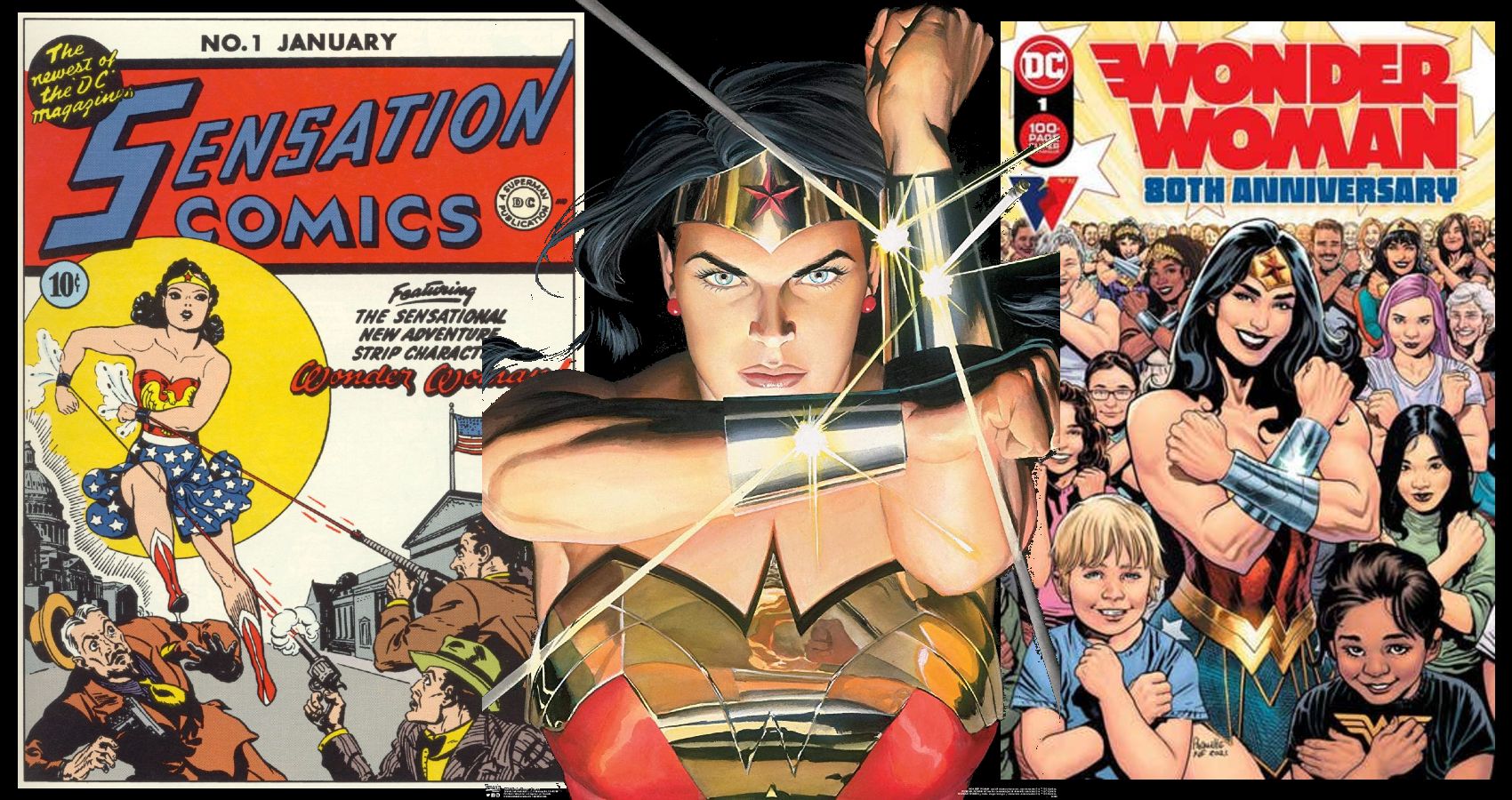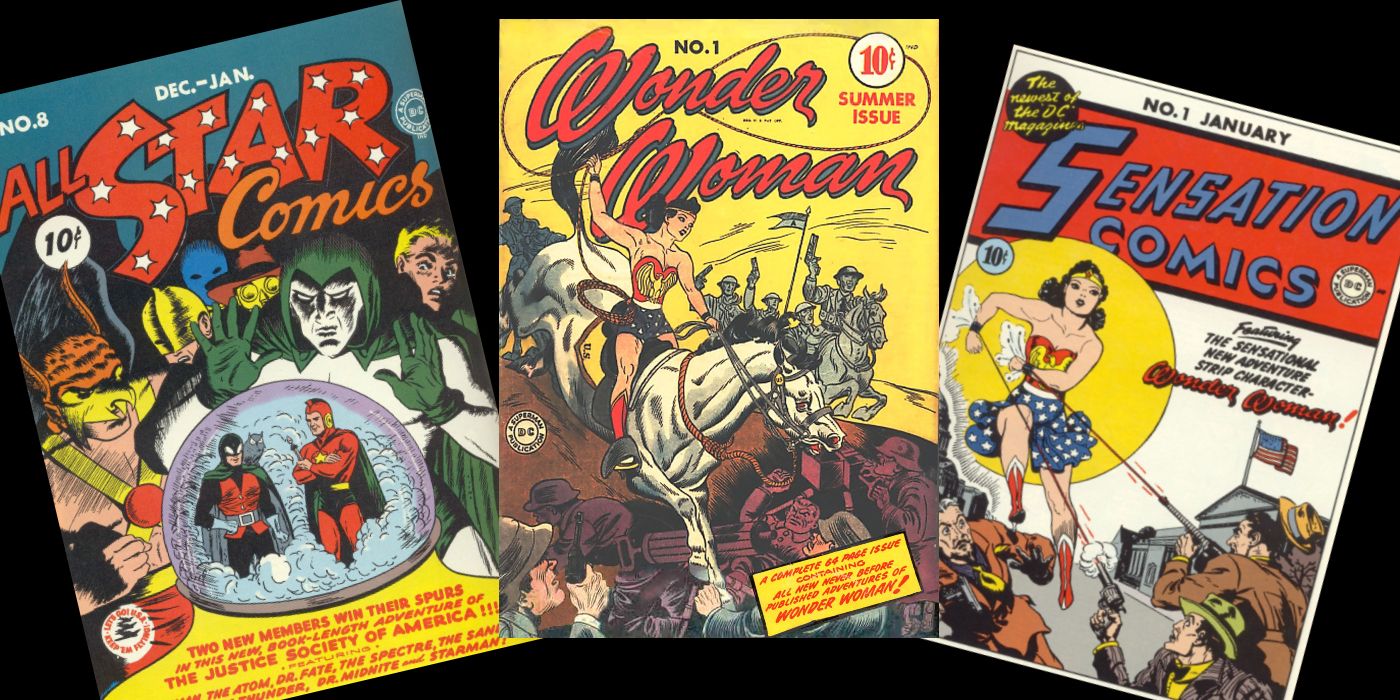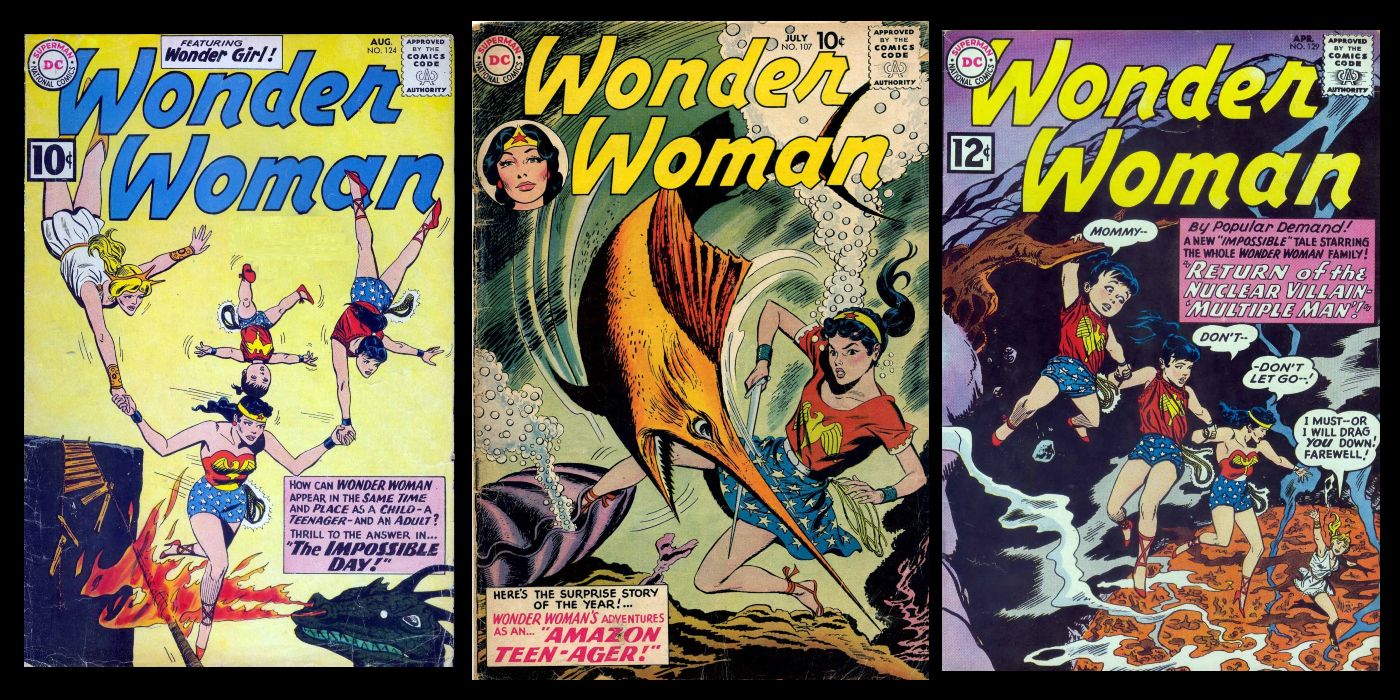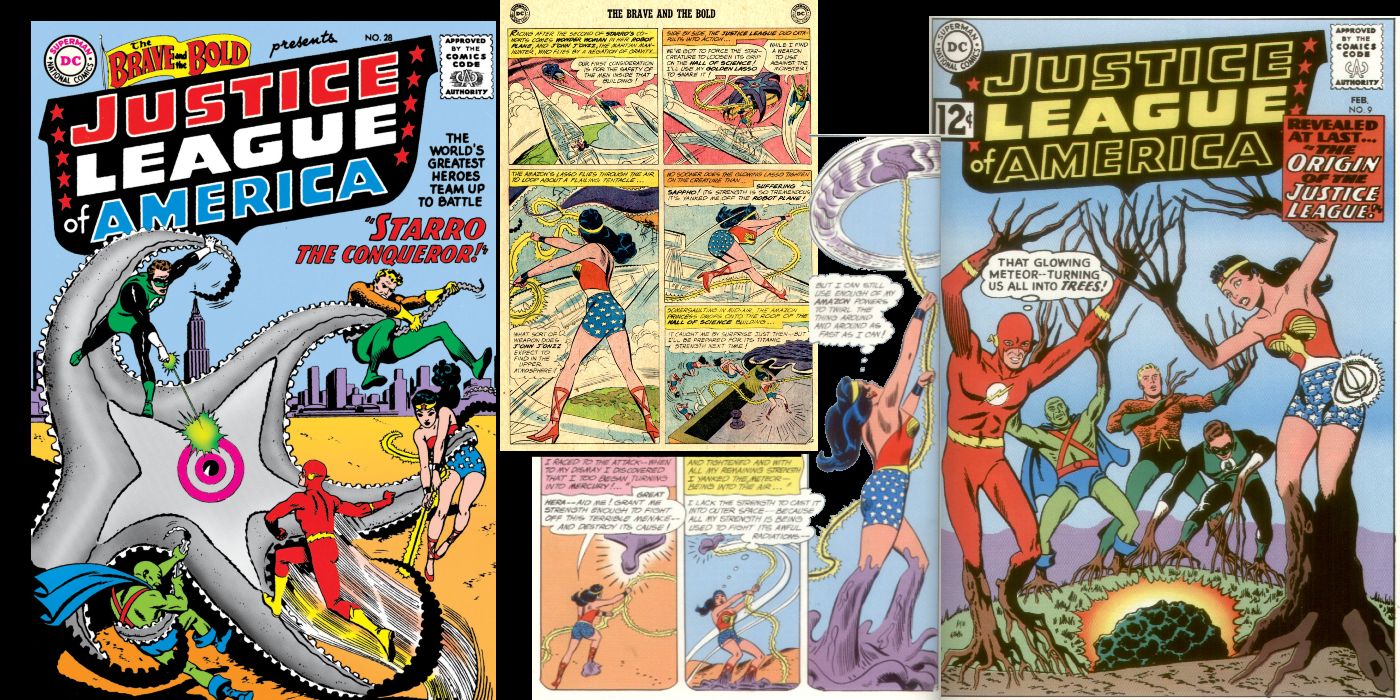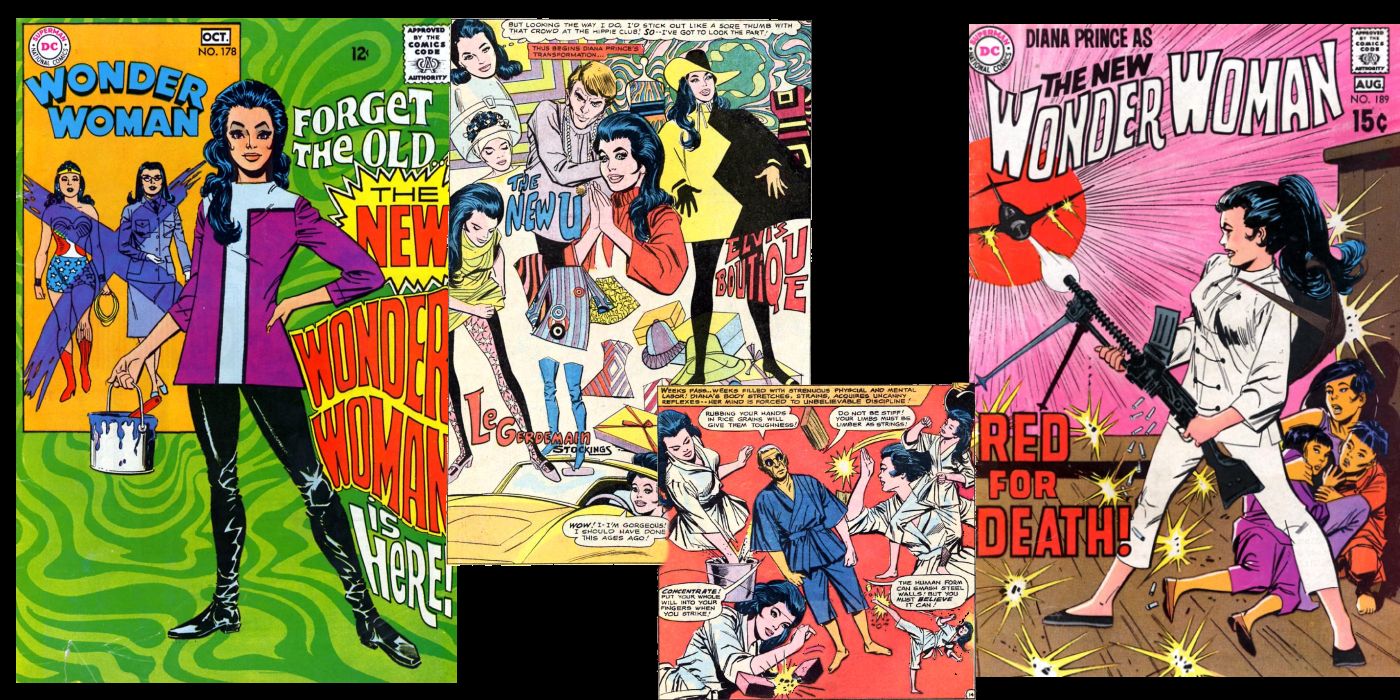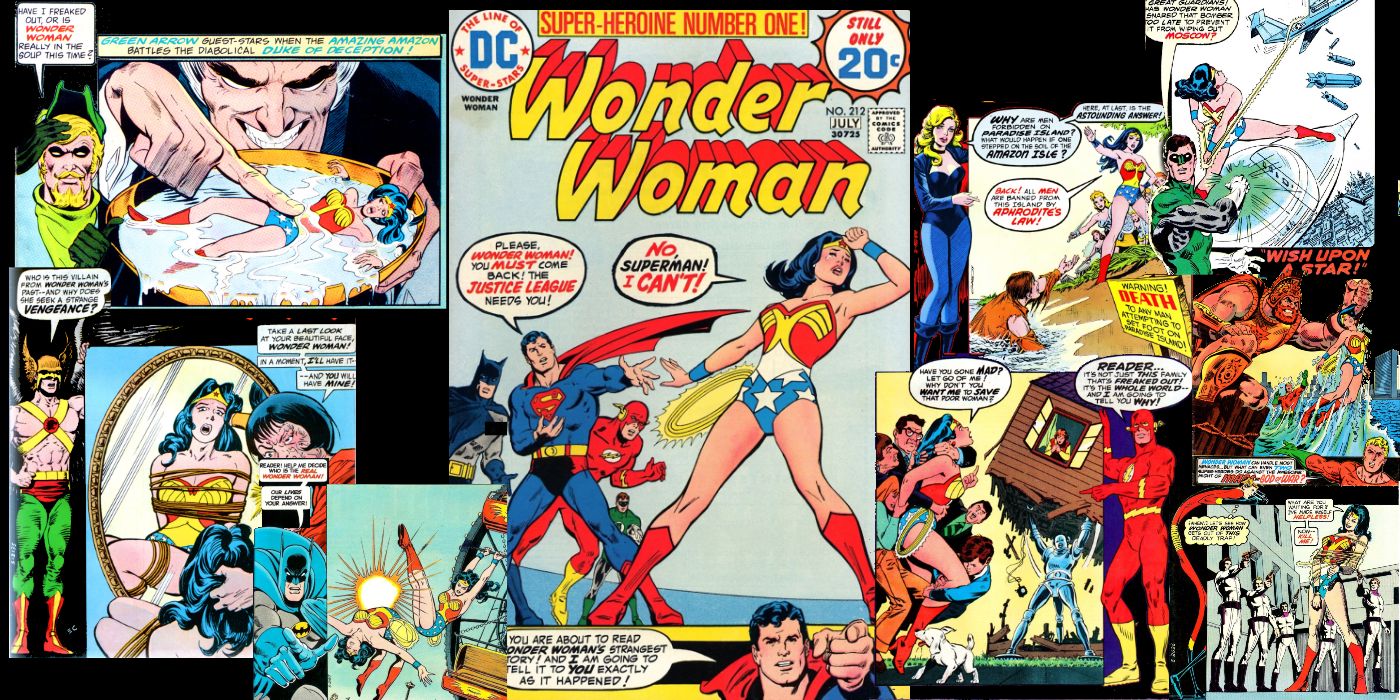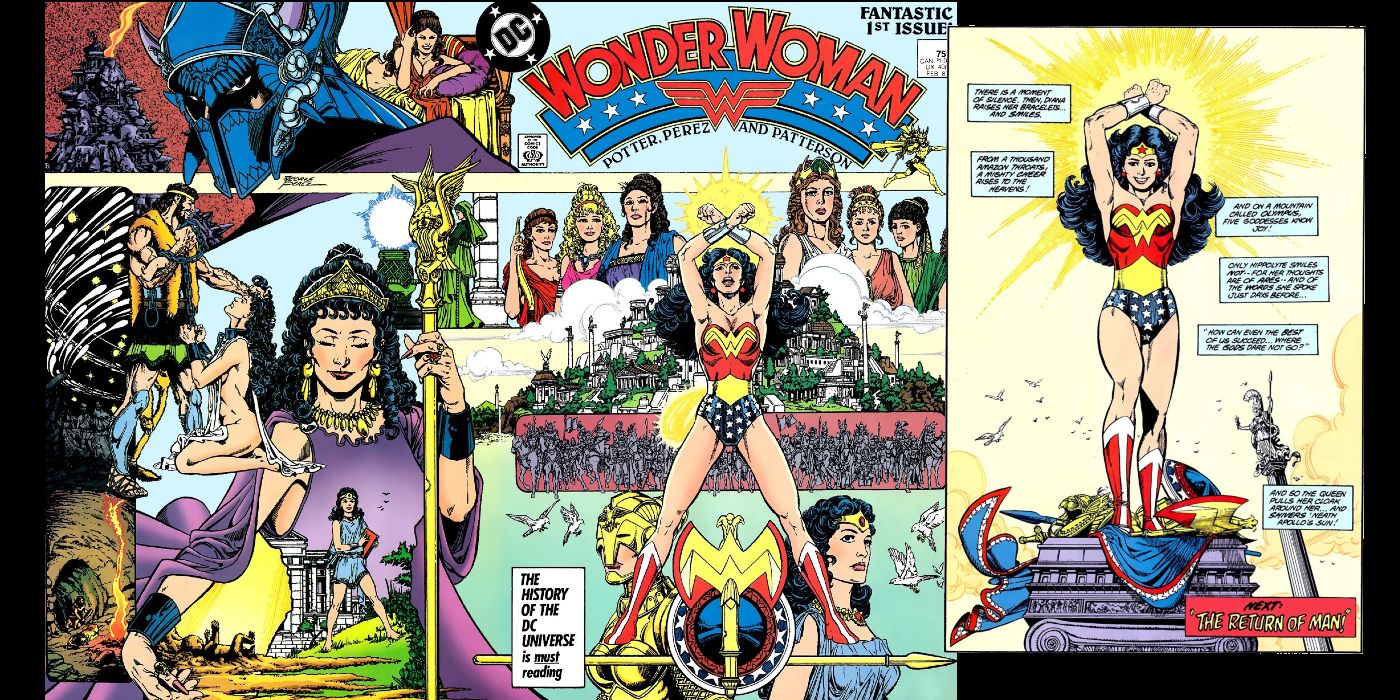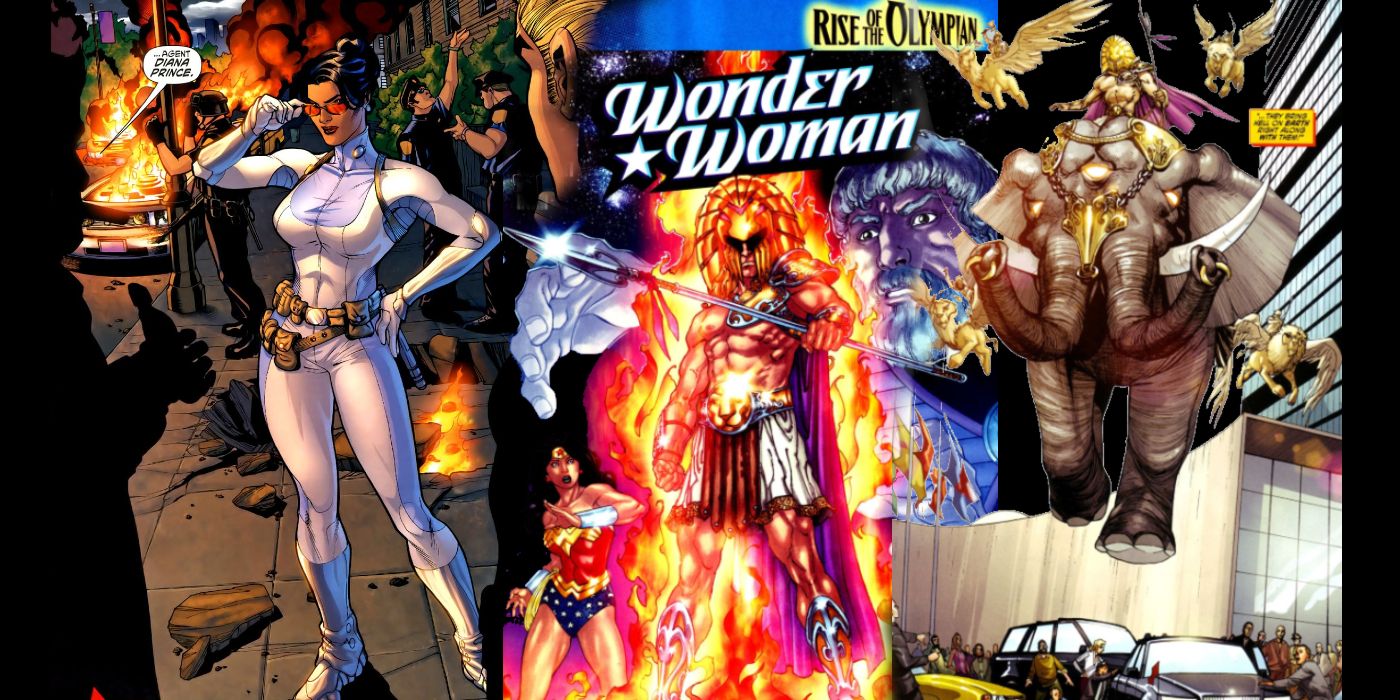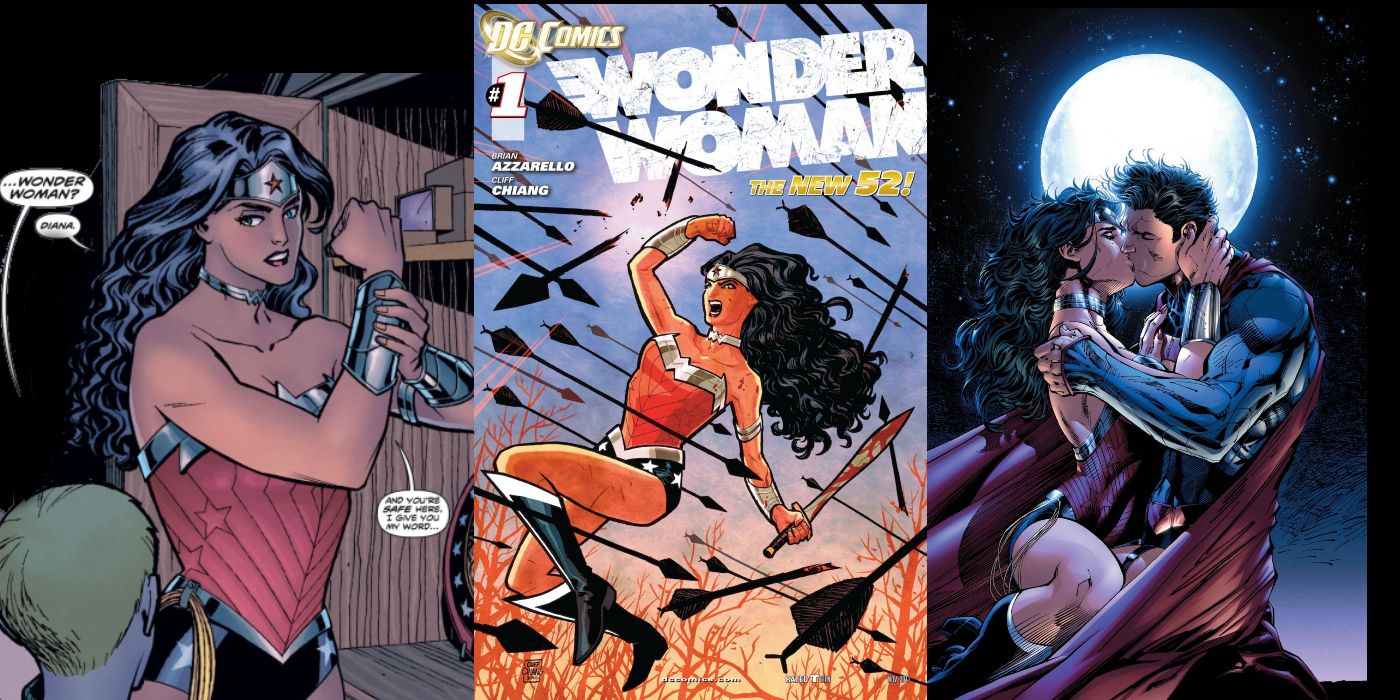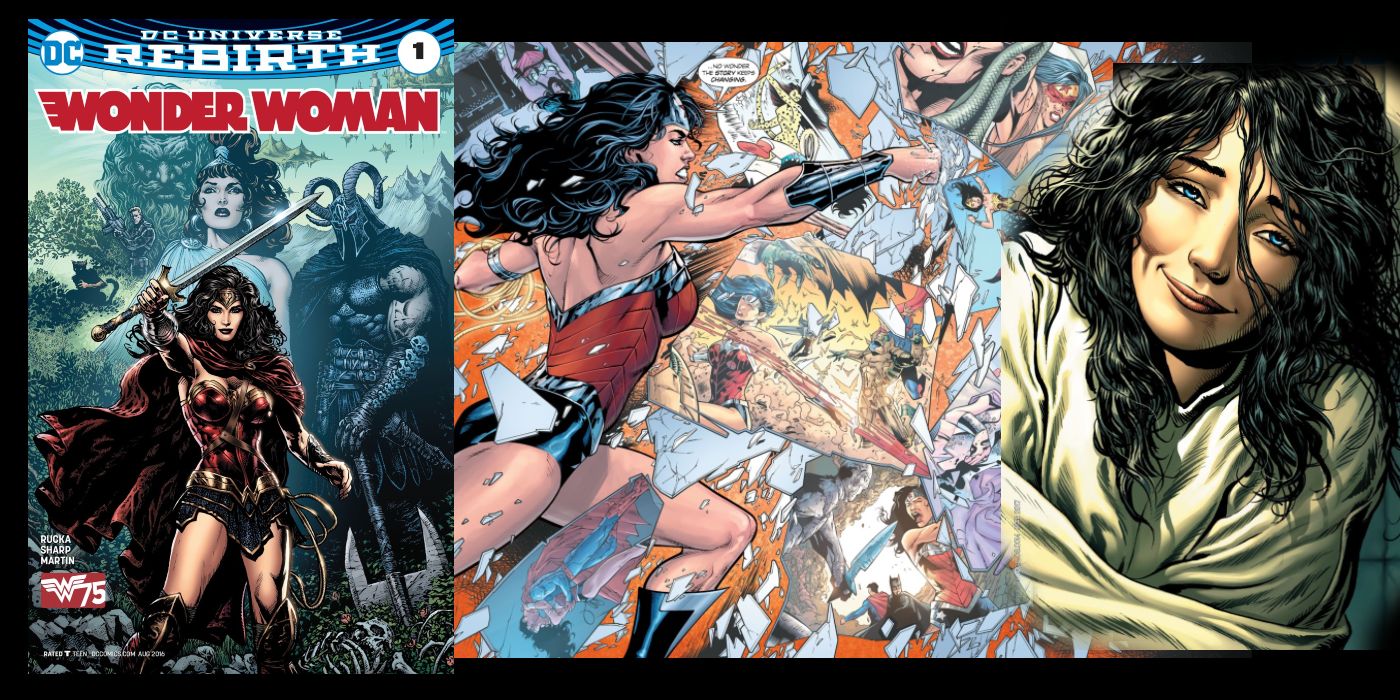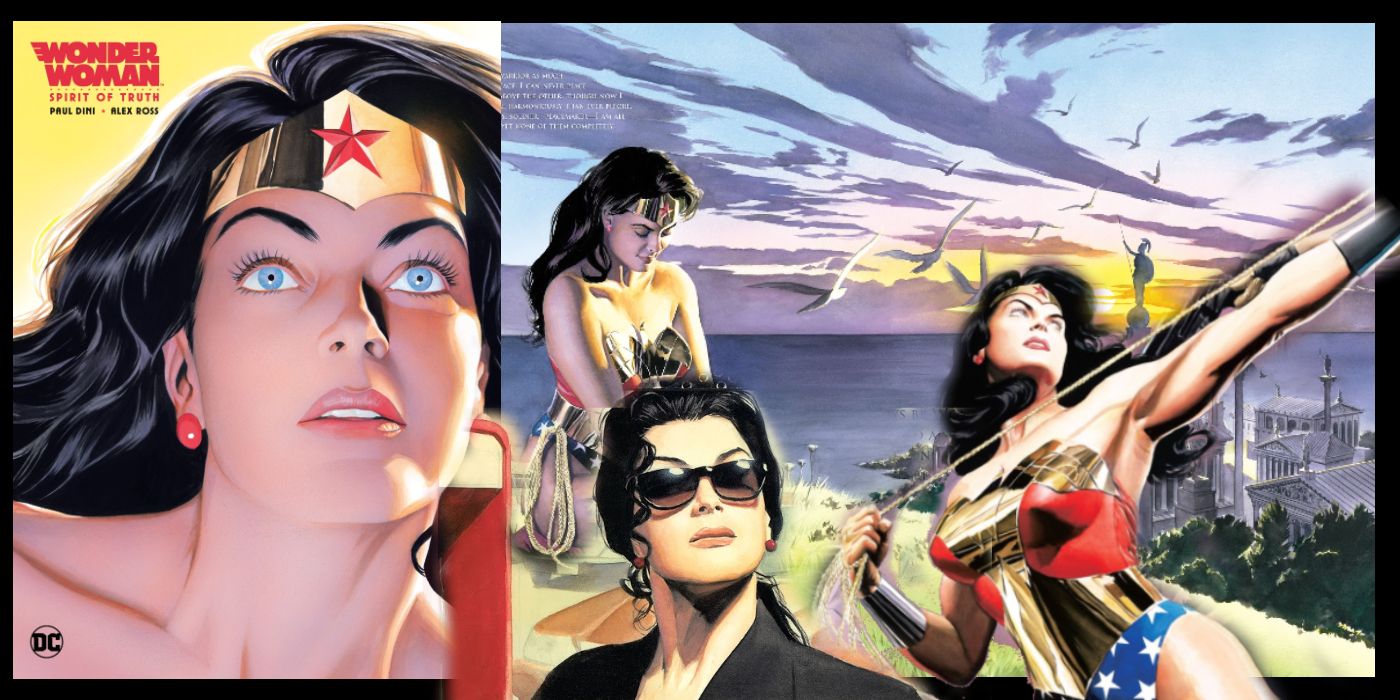In December of 1941, Wonder Woman made her first appearance in the pages of All-Star Comics #8, followed the next month in her own DC Comics series, Sensation Comics #1. The creation of psychologist/writer William Moulton Marston and artist Harry G. Peter, Wonder Woman was based on his idea of a liberated and unconventionally powerful modern woman, hoping that she would serve as an inspiration to young female readers.
Throughout her 80 years, Wonder Woman has been one of the characters with one of the longest continual publishing histories, with only a brief hiatus following Crisis on Infinite Earths. While Wonder Woman has undergone some changes through the years, she has always been and continues to be identified as a symbol of empowerment and liberation for women.
10 All-Star Comics #8, Sensation Comics #1, and Wonder Woman #1 Told Wonder Woman's Origin And Introduced Her Supporting Cast
The groundwork for Wonder Woman's world was laid out in Sensation Comics #1 and Wonder Woman #1 following her debut in All-Star Comics #8. This comic introduces the Amazonians and tells how Diana was created out of clay by her mother, Hippolyta Queen of the Amazons, and how she met Steve Trevor and won the honor of returning him to man's world. Sensation Comics #1 picked up the story, as Diana and Steve return to America and tells how she got her secret identity.
Wonder Woman #1 retells Diana's origin with a few minor retcons and introduced supporting characters such as Etta Candy, General Darnell, and one of her first villains, Baroness Paula von Gunther. The Golden Age Wonder Woman was also the first female of the Justice Society of America, though more as their secretary.
9 Bringing Wonder Woman To The Silver Age
When William Marston passed in 1947, the rights to Wonder Woman became the exclusive property of DC Comics with the stipulation that if they stop publishing the title, the rights would revert back to the Marston estate. Roger Kaniger would take over as writer and editor from 1946 to 1968. During his run on the series, Kaniger changed Wonder Woman's origin and mission while adding in concepts that define the Silver Age of comics.
One highlight of the Silver Age for Wonder Woman was the creation of Wonder Family, in what is now known as the "Impossible Tales" starring Wonder Woman, teenage Diana (Wonder Girl), a baby Diana (Wonder Tot), and her mother. Bob Haney would misinterpret the different versions as separate characters, essentially making Diana her own sidekick and a founding member of the Teen Titans.
8 Justice League #9 (1962) Established Wonder Woman As A Founding Member Of The Justice League
Wonder Woman was one of the few Golden Age characters who did not receive a science fiction redesign like The Flash and Green Lantern, leading to an Earth-1 and Earth-2 version. While it is highly debated as to the issue of Earth-One Wonder Woman's first appearance, either #98 or #105, it was during this time that she became part of the larger DC Universe.
Brave and the Bold #28 introduced the Justice League, DC Comics' flagship team, and Diana's first published appearance of amongst the other reimagined heroes of DC Comics. In Justice League of America #9, telling the origin of the League, the Earth-1 Wonder Woman is established as a founding member.
7 In The Late 60s To Early 70s, Wonder Woman Was Kung-Fu Fighting A Bad Concept
Wonder Woman has always been a feminist icon, but in the late 60s at the height of the women's movement, Wonder Woman under the creative team of Dennis O’Neil and Mike Sekowsky, often went too far the opposite way. The creative team, hoping to capitalize on the growing secret agent genre, had Diana renouncing her role and powers of Wonder Woman, becoming an independent “modern woman.”
The depowered Diana became the student of martial arts master I-Ching, as the two went after Dr. Cyber international terrorist and criminal, street-level threats, and the occasional team-up with Superman and Batman. Wonder Woman would get her powers back in Wonder Woman #204 and embark on adventures, kicking off the second half of her Bronze Age adventures.
6 Wonder Woman: The Twelve Labors Restored Wonder Woman To Her Rightful Place In The DCU
No sooner had she regained her powers, Diana found herself in combat with the Nubia, the Wonder Woman of the Floating Island, claiming to be the one true Wonder Woman. After this confrontation, Wonder Woman still felt unworthy and unsure of herself as her mother had removed part of her memory that she found to be unpleasant.
Feeling the need to prove to herself that she was worthy to rejoin the League as an active member, Wonder Woman underwent a series of tasks, similar to those performed by Hercules and monitored by individual members of the League observing. The story also helped reestablish her as the strong and iconic character she had been since her creation.
5 George Perez Expanded Wonder Woman's Story In The Post-Crisis On Infinite Earths Series
Crisis On Infinite Earths brought significant changes to Wonder Woman. The Earth-2 Wonder Woman, an elder stateswoman in the pre-crisis superhero community, ascended to Mount Olympus along with Steve Trevor, now her husband. After a brief hiatus, Wonder Woman was reintroduced into the new DCU in a new series spearheaded by George Perez, who incorporated aspects of Greek Mythology into Wonder Woman's origin and the history of the Amazons.
He also changed Diana's mission to Man's World, making her an ambassador from Themyscira charged with the task of bringing peace to the outside world. Perhaps the most significant change he introduced was that, unlike Batman or Superman, she was willing to use deadly force if needed, something that would continue to define her character.
4 Gail Simone's Run On Wonder Woman Left Readers With An Unforgettable Story That Added To Diana's Past And Challenged Her Role In Man's World
The events leading to Infinite Crisis, such as Wonder Woman killing Maxwell Lord, and the events that followed greatly affected how Diana was viewed by both the public and the superhero community. Following the events of 52, it is revealed that Diana was no longer Wonder Woman, instead of working for the Department of Metahuman Affairs in her readopted civilian identity, Diana Prince.
Following the events of the Amazon's Attack story arc, Gail Simone took over as writer for the Wonder Woman title, giving readers unforgettable interconnected story arcs such as The Circle, about a group of Amazon who tried to assassinate Diana at her birth to The Rise of the Guardian. The Guardian, Achillies Warkiller, was created by Zeus to become king of Themyscira and a counter to Diana, leaving lasting changes to Wonder Woman before the New 52.
3 The New 52 Gave Wonder Woman A New Status Quo And A New Romantic Partner
The New 52 relaunch gave Wonder Woman a new origin, establishing her as a demigoddess, the daughter of Queen Hippolyta and Zeus instead of clay brought to life by Aphrodite. As her new story unfolds in the New 52, Diana becomes the God of War, replacing Ares, a move that causes the remaining children of Zeus to rally against her.
Throughout the 52-issue series, Diana learns that life she knew was a lie, as she seeks to protect Zola, who, like her, is the child of Zeus and a human woman—making Hera jealous once again at her husband's philandering. While readers accepted this new direction for Wonder Woman, the controversial decision that split readers was the romantic relationship with the New 52 Superman.
2 Greg Rucka Returned To Wonder Woman During Her 75th Anniversary Shattering Diana's World And Mental State In The Lies Story Arc
The Rebirth Era found Wonder Woman again questioning her true origin as she remembers it as a mixture of her the pre-Flashpoint past and what she learned during the New 52.
In The Lies arc, Diana enlists the help of Cheeta and Veronica Cale to help her locate Themyscira, while Year One retells the story of her time growing up on Themyscira. In The Lies storyline, Diana learns that she never returned home after leaving with Steve Trevor, a revelation that leaves her mentally broken and in a mental hospital while she comes to terms with what she has learned.
1 Paul Dini's Spirit Of Truth Explored Wonder Woman's Dual Identity As Both A Warrior & Peacemaker
Spirit of Truth, the oversized one-shot by Paul Dini and Alex Ross, is an excellent out-of-continuity exploration of Wonder Woman's struggle to reconcile the two roles she is meant to play in man's world—warrior and ambassador of peace. After a nice recap of her origin, Wonder Woman is shown struggling to connect with both world leaders and ordinary people, each of whom sees her as someone larger than life.
After talking to Superman, Wonder Woman travels the world, learning that she can accomplish more by being with the people rather than appearing to be above them. Like the other works in this series by Dini and Ross, Spirit of Truth examines Wonder Woman at her core and shows why she has always been an iconic character.

